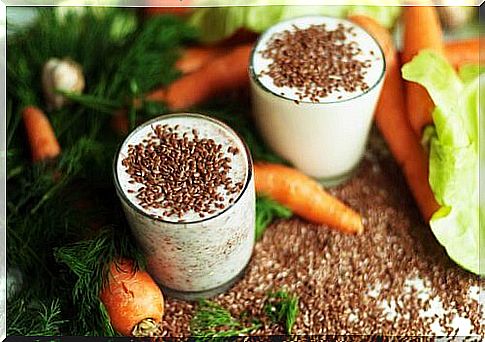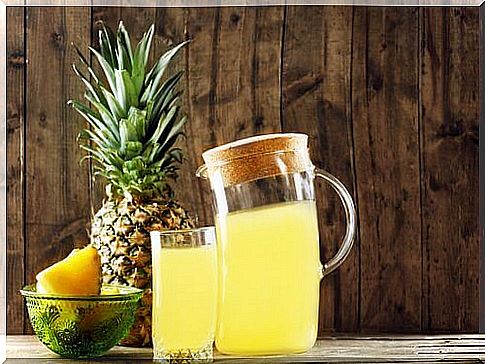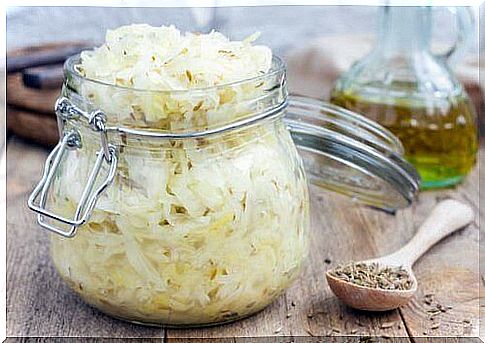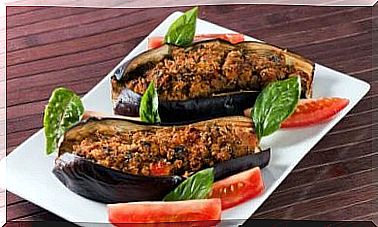Three Must-have Fermented Foods In Your Diet

Fermented foods have a very long tradition in many countries, where they are consumed as an accompaniment to dishes that are difficult to digest, such as roasted meat.
However, they are also very beneficial for our intestinal flora and our overall health.
In this article, we’ll share three fermented foods that you can prepare at home that cannot be missing from your diet, made with pineapple, cabbage and milk.
What are fermented foods for?
Fermented foods are alive, that is, they contain microorganisms that favor and repopulate the intestinal bacterial flora.
The health benefits of these foods are as follows:
- Improve digestion.
- Deflate the belly.
- Regulate intestinal transit.
- They improve the assimilation of nutrients from food and prevent nutritional deficits.
- They elevate defenses, thanks to the relationship between the intestine and the immune system.
It is important to consume these fermented foods on a regular basis, as there are factors that damage the intestinal flora, such as some digestive disorders, stress or antibiotics.
1. Pineapple peel drink

The pineapple peel fermented drink has the great advantage that we use a part of this fruit that we tend to waste and that, however, hides very powerful enzymes that are beneficial to our health.
These enzymes activate the fermentation process of this delicious and surprising drink that has a touch similar to apple cider.
In addition to benefiting our intestinal flora, this fermented drink offers us the virtues of pineapple.
Therefore, we benefit from the properties of this food, which is so digestive that it favors the elimination of liquids retained in areas such as the legs, stomach or face.
Ingredients
- The husk of a large pineapple, well washed and, if possible, organic.
- 3 cups of brown sugar (360 g)
- 1 liter of water
Method of preparation
- First, cut the pineapple skin into small pieces and place in a glass container that can be sealed tightly.
- Then add sugar and water.
- Close the jar and leave it at room temperature for two or three days, until the sugar dissolves.
- Finally, strain the drink and keep it in the refrigerator.
- It can be taken on an empty stomach to benefit from its medicinal properties or at any time of day to enjoy a very refreshing drink.
Note : As sugar is consumed during fermentation, it is possible to sweeten it with a little stevia or honey, if you like.
2. Sauerkraut

Sauerkraut is the famous fermented cabbage and sea salt that is consumed in many European countries as an accompaniment to all types of meat and fish roasts.
You can also buy ready-made sauerkraut; although it is a product generally made with alcohol, which has not undergone a natural fermentation process, which is only achieved with salt.
Therefore, it is much better to prepare it ourselves at home.
Ingredients
- One large cabbage or two medium ones, green or purple
- 3 scoops of sea salt (54 g)
- Juniper seeds (optional)
Method of preparation
- Cut the cabbage very thin or grated, then place in a glass jar.
- As you add the cabbage, squeeze it tightly to compress it.
- Add salt gradually and in parts in the different layers, just like the juniper seeds.
- Do not fill the pot all the way to the top. You should leave some space because during fermentation the cabbage will give off its own juice. If the juice doesn’t cover all the cabbage within 24 hours, add salted water.
- Do not seal the pot tightly, but cover it with a cloth.
- If substances accumulate on the surface of the juice, gradually remove them.
- In two or three weeks, your sauerkraut will be ready.
3. Kefir

Kefir is a fungus through which any milk of animal origin can be fermented, as it feeds on lactose, which is the sugar present in milk.
We can buy it ready-made or even prepare it at home very simply.
- Just let the kefir beans ferment in milk for a day or two.
- The result will be similar to a liquid yogurt with a sour touch resulting from fermentation.
- Sweeten with a little honey and accompany with fresh fruit or dried fruit.









